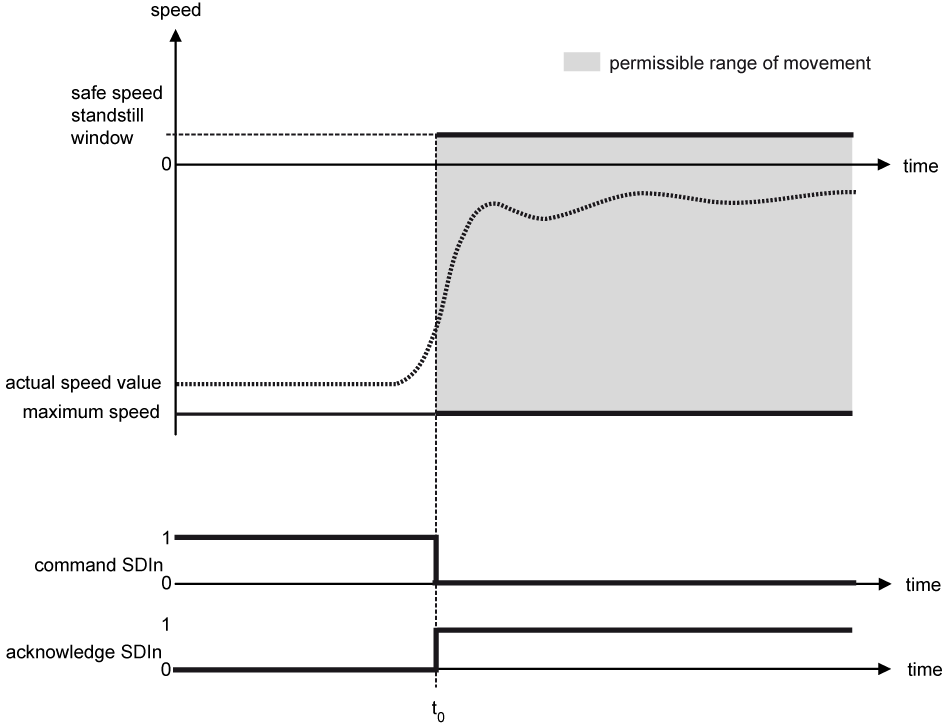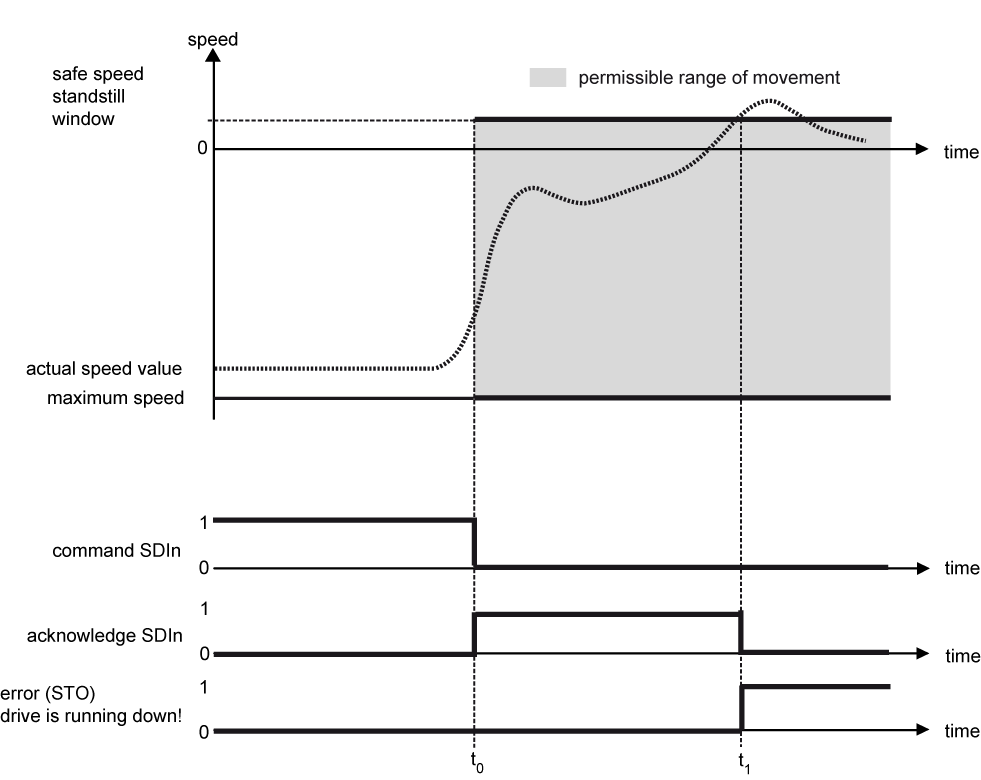Safe direction negative (SDIn)
Properties
- Safety function according to DIN EN 61800-5-2:2008-04
- Monitoring the motor shaft direction of rotation
- Safe monitoring of the actual speed value (2-channel)
- Negative direction of rotation permitted
Description
The safety function can be started by a safe input or by the corresponding bit in the control data.
The acknowledgement can be fed back by safe output or by status data.
The started SDIn safety function monitors that the motor shaft does not rotate in the positive direction by monitoring the actual speed value for the correct sign. The safe speed standstill window defines a speed range between zero speed and the positive direction not permitted. Control fluctuations around zero speed within the safe speed standstill window do not result in the generation of an error by the safety monitoring.
Example 1: Drive movement in the permissible range of movement (negative direction permissible)

|
Time t |
Explanation |
|---|---|
|
t = t0 |
The safety function is started and the SDIn acknowledgement is set. |
Reaction in case of an error
As soon as the safety function detects a deviation from the limits of the monitored values, the drive is set to the safe state 'Safe torque off (STO)'. (example 2).
|
|
|
|
|
Danger to life due to unexpected movements! The drive will be torque-free in the status 'Safe torque off (STO)', in case of mains failure or in case of faulty drive controller. External application of force on the drive axis may result in life-threatening movements (e.g. hanging axes can fall down). Steps to prevent:
|
Example 2: Drive movement deviates from the direction in the SDIn state (negative direction permissible)

|
Time t |
Explanation |
|---|---|
|
t = t0 |
The safety function is started and the SDIn acknowledgement is set. |
|
t0 < t < t1 |
The safety function monitors whether the actual speed value meets the permissible range of movement. |
|
t = t1 |
The safety function detects an error, switches the drive into the STO state and sets the error bit. The SDIn acknowledgement bit is reset. |
|
t ≥ t1 |
In the STO state, drive movements are no longer monitored since no further error reaction is possible. |
Acknowledge an error with "Clear error"
As soon as an active safety function detects a deviation from the limits of the monitored values, the drive is set to the intended stop function. The error bit (FSoE status bit 7) is set and the acknowledgment of the safe status is withdrawn.
With the 'Clear error' signal (FSoE control bit 7 or the 'Clear error' command in the drive controller) the
error status ist acknowledged (deleted). If during and after the 'Clear error' the start signal from a previous safety function is still active and no other changes to the settings of the safety function have been made, the safety function restarts and also transition times (if available) work again.
Parameters
Safe parameters
|
Parameter |
Name |
Code |
Unit |
Min |
Max |
|
'SDI safe speed standstill window' |
N(zero,SDI) |
rpm |
0 |
60000 |
|
|
The parameter Prm64 is used by the SDIn and SDIp function. |



